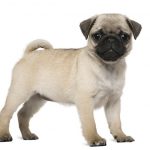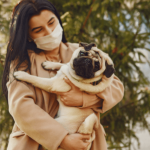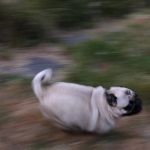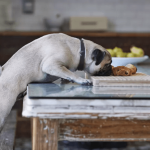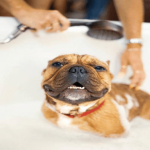Dogs
Do Pugs Calm Down After Neutering?
Pugs can be cute and lovely furballs in their growing years. But, human parents like you can get a bit annoyed with their dog’s teen behaviour. If you are thinking of neutering to calm your pug, it’s okay. Let me tell you it’s not a big deal. However, it is also true that you also need some expert advice regarding the whole process. Visit a nearby vet and know how to go about neutering your pug. Also, remember neutering is for male dogs while spaying is for female dogs. Let’s know about it more.
Contents
- 1 At What Age Should You Neuter a Pug?
- 2 Difference Between Neutering and Spaying
- 3 What are the Benefits of Neutering a Pug?
- 4 Can You Neuter Your Pug too Early?
- 5 What Are the Effects of Neutering on a Pug’s Behaviour?
- 6 What are some of the very known myths about neutering?
- 7 What are some of the risks associated with neutering?
- 8 How to Prepare Your Pug for Surgery?
- 9 How Long Does the Surgical Procedure Last?
- 10 Will My Pug Be in Pain After Surgery?
- 11 How to Take Care of Your Pug After Surgery?
- 12 How Much Can Pug Neutering Cost?
- 13 Can You Neuter Your Pug Free?
- 14 FAQ’s that you might want to know:
- 15 Final Words
At What Age Should You Neuter a Pug?
You can neuter your pug after eight weeks. Remember, look at the health status of your pug as well. Contact your veterinarian for neutering. The traditional age shall be 9 weeks.
However, spaying can be a bit different. It is done on dog breeds that are 4-6 months old. The age is a little younger when compared to the ages of other breeds which get their neutering done at 7-8 months old.
Vets can consider a host of factors before surgically operating their pooch. They will take into account your pug’s dog’s size, health, and age. Neutering and spaying can also lead to several health complications.
Try to get your pug neutered when they are young. Older pugs can have several health implications when neutered, they can be overweight.
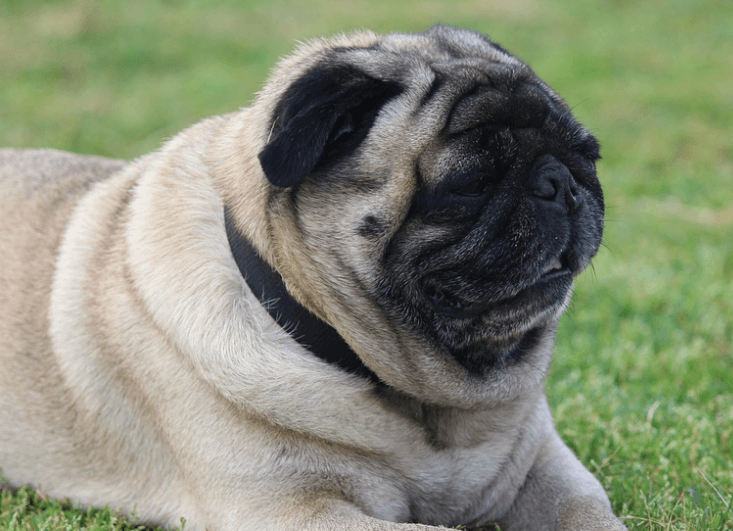
Difference Between Neutering and Spaying
Neutering is a process in which male testicles are removed. It sounds horrible, but there are many advantages to neutering. It is a procedure of having your dogs being desexed.
Neutering can also be known as castration, which is done under sedation. It is when a pug’s testicles and spermatic ducts are removed.
Spaying however is also done during sedation on female pugs. Surgically the female reproductive parts are removed. In this process, the ovaries, fallopian tubes are surgically removed.
What are the Benefits of Neutering a Pug?
Masculinity can be a problem in our society. It is ingrained and entrenched in us as a society. Many people still think getting their male pugs neutered will make their pugs less masculine. Likewise, there are many misconceptions one has regarding neutering:
- It is a great surgical operation to keep your pooch safe from testicular cancer.
- Pugs when neutered pour out more affection as compared to a non-neutered one.
- Male pugs become less territorial after being neutered.
- It stops your pug from indulging in unwanted breeding. A pug can start breeding when he is just six months old.
- Pugs also stop biting when they are neutered.
- Neutered males won’t get into unwanted fights. They do not get into fights like other dogs.
- It’s a good step. It’s a good way to have more control over the population of pugs.
It just helps you to have more control over accidental babies of your pooch. Sometimes there is also a likelihood of your pug impregnating another neighbour’s pug. It’s better to get them neutered. It can save you from a lot of problems in the future.
It also leads to a lot of problems that we rarely talk about. There are as many as 3.3 million orphan dogs that do not have any homes. We should not be increasing that number furthermore.
Can You Neuter Your Pug too Early?
Yes, there is a chance of neutering your pug too early. That’s why it is advised to visit a vet before neutering. Neutering or spaying is very body intensive. It has long implications on your pooch’s body.
If you neuter a pug when they are not ready you might find certain changes in your pooch’s behaviour like fear aggression, phobias, and reactivity. It won’t be easy for you to deal with. Try to take your pug to a well-known animal behaviourist and ask for suggestions on how to find ways around it.
What Are the Effects of Neutering on a Pug’s Behaviour?
Neutering has a direct effect on your dog’s libido. Your pug will have a very low sex drive once they are neutered. Though there are pugs who still have a high sex drive after neutering. But can you imagine what would have happened if they would have not been neutered?
As discussed earlier with aggression the topic is much more nuanced. You can expect your dog to not be aggressive. But because of the neutering process, they can develop a fear-based aggression process.
Pugs in general are laid-back dogs. Castration or neutering can make your pug a bit lazy. They can sleep around your living space. That’s how they are as a breed. Pugs love to sleep.
However, the advice is, if you are jumping the gun on neutering the pug out of behavioural problems, I would suggest not to. Look into the problem in a much deeper manner and analyse. Is there any other reason behind your pug’s rowdy behaviour? Neutering at the very end is a painful process. I would suggest you look into the complex behavioural characteristics before jumping the gun.
What are some of the very known myths about neutering?
Many people do not want to neuter their pugs because they believe everything on the internet. Some of the common myths that get into a pug’s human parents mind:
- The surgical operation is too expensive.
- It will change my pug’s personality.
- It will cause a lot of pain for my pug.
- It can make my pet pug fat.
- I might want my pug to have babies later on.
If you are having similar sorts of queries on your mind, I suggest you talk to a professional. All of these problems are doubts and fears you have as a human parent of your pooch. It can be eradicated with some effort.
What are some of the risks associated with neutering?
Many risks are associated with neutering. Some of these threats can be considered genuine. Some should not be considered a threat whatsoever. You can however say, the benefits will be more compared to risks.
Some risks that are associated with spaying:
- There is a risk of a female pug for urinary incontinence. This problem however develops when spaying in females is done when they are too young.
- Surgical complications can happen. But, remember these are not grave problems. The risk of having any surgical complication is very less.
- Spaying and neutering can alter the growth plate in pugs. It is because neutering blocks the growth plate in pugs. It can increase the height growth that pugs have.
- It can also lead to torn ligaments. This is pretty prevalent in pugs.
How to Prepare Your Pug for Surgery?
Before the neutering process, you will be asked to submit a blood work of your pooch. The vet wants to be sure about your pug’s health. It’s pre-anesthetic blood work. It’s done just to see if your organs respond negatively to anaesthesia.
The vet also might be instructed to withhold food for a shorter period. Pugs that are older than 4 months shall withhold food for 24 hours. Pugs that are younger than 4 months should temporarily stop eating food before the surgery.
Let us know a brief about the night before the procedure:
- Try to feed your pug before 8 pm. Do not give your pug any snacks after 9 pm.
- Your pug can drink water at night. But your pug should not drink anything in the morning.
The morning time before the procedure:
- Do not give your pug anything to eat or drink or they might vomit due to the influence of anaesthesia.
- Reach the vet’s office a few hours early. You might have to fill out some forms.
How Long Does the Surgical Procedure Last?
The surgical procedure takes around 15-20 minutes. In the process, they generally root out the reproductive parts of your pug. The time taken very much depends on how old is your pug? If your pug is very old then the surgical process might take more time than expected.
And you might be able to take your dog the same day. If complications arise, the vet will keep your dog in their clinic for some time. It means that the vet will take care of your pug in case there will be any complications occurring.
Will My Pug Be in Pain After Surgery?
Neutering a dog is a surgical procedure and it can be really painful. There are many modern medications available in today’s time. The intensity of the pain can lower down. Pug puppies experience some kind of discomfort. But properly following the guidelines of your vet to take care of your pug post-surgery is the best idea. There are some of the things that you can do as a pug parent to make it easier on your pooch.
How to Take Care of Your Pug After Surgery?
After the anaesthesia wears off, your pug will be woozy. Your pug might also try to bite you. It can be because they will be in so much pain. Younger pugs won’t take long to recover. Older pugs will take some time to recover.
Make sure you keep a strict eye on the surgery site of your pug. Because of skin irritation, they can aggressively like the site and tear off the stitches again. Watch out for markers of redness and swelling in the area.
You can even use a lampshade to prevent a dog from licking its wounds. Various other methods can be employed to keep your dog from licking the part where the incision is done.
If those things do not work, you can use a cloth, tie or bandana on your pug’s waist or the surgical site. Make sure your pug has no access to the site or else they can create a wound out of it. Pugs will be able to do their normal day work after 10-14 days when the dog neuter surgery is done.
How Much Can Pug Neutering Cost?
Pug neutering can cost you a lot of money. In the United States specifically, neutering can cost anywhere between $55 to $350. It can vary according to your pug’s age, health and the place where they live.
These services generally your vet provides when they charge you a certain amount:
- Examination of a pug before surgery
- Giving your pug general anaesthesia
- Sedating your pooch
- Doing a surgical procedure (castration or spay)
- Providing pain medications
- Providing antibiotics when necessary
- Monitoring your pug after surgery is done
- E collar
- They also indulge in post-op suture removal
Every pet clinic is not the same, the contents of pricing can be different. Do not shy away from asking what are the costs of the services that you have availed of. This way you won’t be surprised when you get the full bill.
Can You Neuter Your Pug Free?
If you do not have the money to get your pooch operated, there is no issue. You can look out for free or low-cost methods. Or you can simply contact a humane society to get your pug operated on.
Through them, you can contact various shelters, veterinarians, and other organizations that are ready to help pet parents that cannot afford the high costs of surgery.
FAQ’s that you might want to know:
How do pugs change after neutering?
Some surveys are done to check how much of a change can be seen in both male and female pugs after neutering and spaying. It is observed that changes were prevalent more in male pugs compared to female pugs. The change is male pugs stand at 79% compared to 53% in females.
Can an aggressive pug change after neutering?
Aggressive pugs can never change. The best way out for someone having an aggressive pug is limiting the exposure of a pug that triggers his aggression. Once you control the factors your pooch won’t be aggressive towards you.
How long does it take for dogs to be normal after getting neutered or spayed?
For a normal pug. It can take anywhere between two to three days for a female pug to return to its normal selves. If you talk about the male pugs they will take around 2-3 days to recover.
Does neutering a pug affect its growth?
There are no studies that point to that. It is however seen that in pugs it can make your pug grow taller. Neutering a pug does not close the growth plate in pugs. This can lead to your pug growing taller than its average height.
Final Words
Neutering is not a big of an issue for your pooch. Just do them if you want to under the guidance of a well-known vet. Make sure you do all the things as per the instruction of the vet. Once you can do things to the point, there is no fear of having any repercussions on your pug.
In the end, after the surgery makes sure your pug is happy and beaming. This will help your pug to recover faster.

-
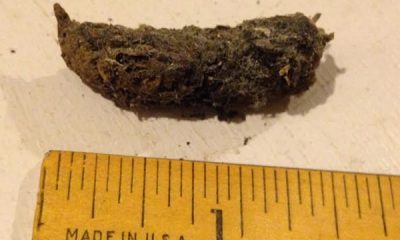
 Skunk4 years ago
Skunk4 years agoWhat Does Skunk Poop Look Like? Images & Identifications
-

 Bunny4 years ago
Bunny4 years agoPregnant Rabbit Labor Signs #Test#Symptoms#Age#Length
-
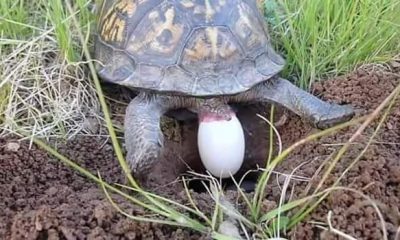
 Turtles5 years ago
Turtles5 years agoHow To Take Care of Turtle Egg At Home?
-

 Turtles4 years ago
Turtles4 years ago8 Basking Rocks/ Platforms for Turtles – A Perfect Guide
-
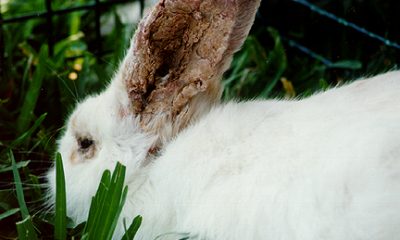
 Bunny5 years ago
Bunny5 years agoHow to Get Rid of Mites on Rabbits? #NaturalRemedies #Video
-

 Horse4 years ago
Horse4 years agoHow Much Weight Can a Horse Carry? #Clydesdale #Friesian #Mustang #Draft
-

 Turtles4 years ago
Turtles4 years agoHow to Take Care of Snapping Turtle Eggs? #Incubating #Hatching
-
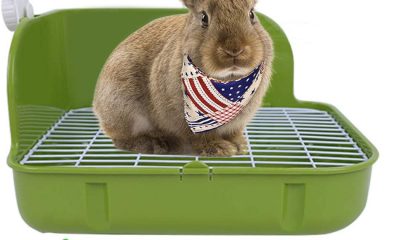
 Bunny5 years ago
Bunny5 years agoHow to Potty Train a Rabbit in House? Tips on Litter Training




